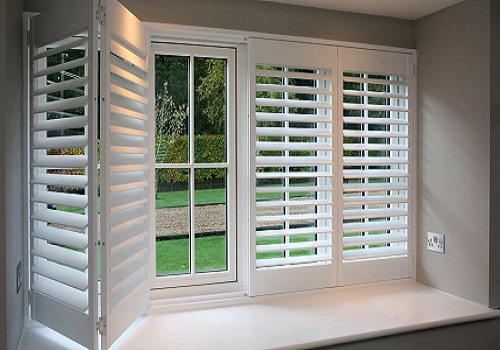When it comes to window coverings, there are plenty of reasons to pick blinds over curtains.
Chief among these is cost efficiency. A good set of blinds saves you money on your utility bill year-round.
Keep reading to find out what you need to know about blinds and reduced energy consumption.
Reduced Utility Bills With Window Blinds
By doing something as simple as installing window blinds, you can reduce the amount of energy your house requires daily.
What are window blinds?
Blinds are window coverings made of vertical or horizontal slats. They’re made with materials like PVC, plastic, polyester, wood, and can be moved and adjusted without much trouble. Besides being decorative, they’re functional in controlling light and ensuring privacy.
Most blinds have a cord located on one side that allows you to adjust them up and down. Additionally, a rod located on the other side lets you control the tilting of the slats and regulate how much light is allowed in.
What are the different kinds of blinds?
Blinds are made using a wide range of materials, each with its own benefits. Here are some popular kinds.
- Bamboo blinds
- Vertical blinds
- Wooden blinds
- Roman blinds
- Roller blinds
One of their most noteworthy advantages is making your home more energy efficient. No matter the type you choose, you can rest assured knowing they will lower both your cooling and heating costs.
How do blinds increase your home’s energy efficiency?
There are four ways in which your home becomes more energy efficient with window blinds.
- Controls heat entering your home in summer
It’s tempting to keep the air conditioner running on the hottest days, no matter the electricity bill. Although a fair amount of sunlight is beneficial, too much will heat your interiors to the point of discomfort.
With window blinds, you have full control over how much sunlight you let in. This keeps your interiors cooler and greatly reduces your AC costs.
- Reduces heat loss in winter
Window blinds are just as beneficial in winter. If snug against the window frame, they greatly reduce heat loss. They can also be kept open during the day and closed at night, trapping heat and reducing the need to turn on your furnace.
Additionally, their tight fit prevents cold air from entering, ensuring the temperature remains consistent throughout the day.
- Stores heat and energy
When blinds are kept closed on a hot day, the heat accumulated from sunlight remains trapped between the window treatment and glass. When it cools down in the evening, opening the blinds allows heat to flood the room. This extra heat keeps the room warmer and delays having to crank your thermostat.
- Increases efficiency (when used properly)
Blinds can save even more energy when opened at proper times. Think about a sunny winter afternoon, when the temperatures start to drop but it stays sunny. By keeping the blinds open, you allow sunshine into your home which maintains a comfortable temperature inside.
When is the best time to open and close blinds?
Knowing the best time to open and close your blinds plays a huge part in saving energy. As mentioned, sunny winter days are an excellent time to take advantage of passive solar heating to warm your home. This is especially beneficial for rooms with floor-to-ceiling glass windows which are great at absorbing heat.
With the mercury rising in summer, the need to use your air conditioner increases. Keeping blinds closed during the day prevents sunlight from heating the room when your AC is on. Alternatively, closing them at night helps insulate your windows against the outside cold. This helps minimize the need to run your heater. Just make sure your blinds are closed properly at night as this is when the greatest amount of heat loss occurs.
Purchasing high-quality window treatments is an inexpensive way to make your use of home energy efficient. Window blinds are durable, and maintaining them is easier than other window treatments. They’re also a great way to reduce your carbon footprint. And with so many varieties available, it’s not hard to buy ones that suit your goals and match your interiors.

